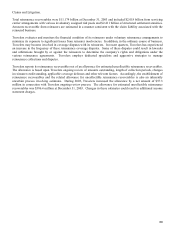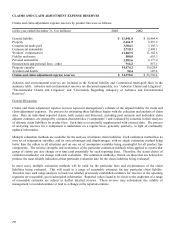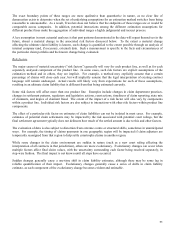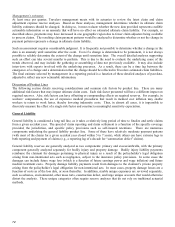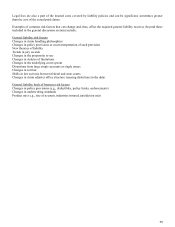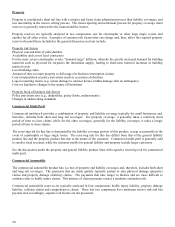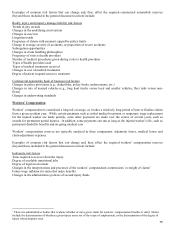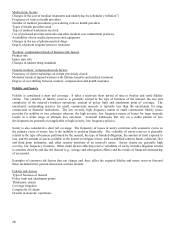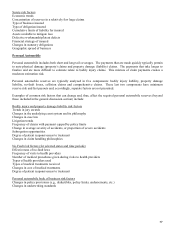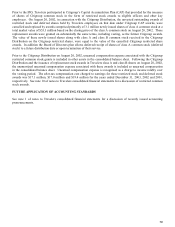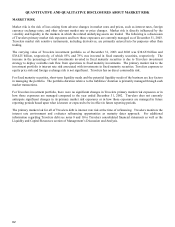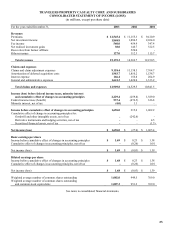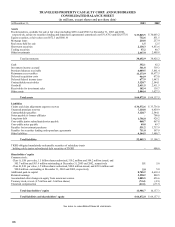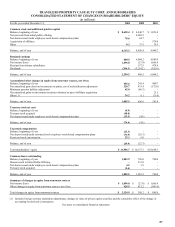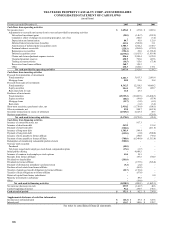Travelers 2003 Annual Report Download - page 80
Download and view the complete annual report
Please find page 80 of the 2003 Travelers annual report below. You can navigate through the pages in the report by either clicking on the pages listed below, or by using the keyword search tool below to find specific information within the annual report.
78
Homeowners and Personal Lines Other
Homeowners is considered a short tail coverage. Most payments are related to the property portion of the policy,
where the claim reporting and settlement process is generally restricted to the insured and the insurer. Claims on
property coverage are typically reported soon after the actual damage occurs, although delays of several months are not
unusual. The claim is settled when the two parties agree on the amount due in accordance with the policy contract
language and the appropriate payment is made (or alternatively, the property replacement/repair is performed by the
insurer). The resulting settlement process is typically fairly short term, although exceptions do exist.
The liability portion of the homeowners policy generates claims which take longer to pay due to the involvement of
litigation and negotiation. In addition, reserves related to umbrella coverages have greater uncertainty since umbrella
liability payments are often made far into the future.
Homeowners reserves are typically analyzed in two components: non-catastrophe related losses and catastrophe loss
payments.
Examples of common risk factors that can change and, thus, affect the required homeowners reserves (beyond those
included in the general reserve discussion section) include:
Non-catastrophe risk factors
Salvage opportunities
Amount of time to return property to residential use
Changes in weather patterns
Local building codes
Litigation trends
Trends in jury awards
Catastrophe risk factors
Physical concentration of policyholders
Availability and cost of local contractors
Local building codes
Quality of construction of damaged homes
Amount of time to return property to residential use
For the more severe catastrophic events, “demand surge” inflation, whereby the greatly increased demand for building
materials such as plywood far surpasses the immediate supply, leading to short-term material increases in building
material costs
Homeowners book of business risk factors
Policy provisions mix (e.g., deductibles, policy limits, endorsements, etc.)
Degree of concentration of policyholders
Changes in underwriting standards
OTHER MATTERS
Reserves for losses and loss adjustment expenses on a statutory basis were $24.029 billion, $23.280 billion and
$20.215 billion at December 31, 2003, 2002 and 2001, respectively. The $749.0 million increase from December 31,
2002 to December 31, 2003 was primarily due to business growth, and reserve strengthening at Gulf which increased
reserves by $521.1 million and American Equity which increased reserves by $115.0 million, partially offset by
asbestos and environmental net loss payments of $607.0 million. The $3.065 billion increase from December 31, 2001
to December 31, 2002 was primarily due to the increase in asbestos reserves of $2.584 billion during the year, partially
offset by net loss payments of $521.7 million for asbestos and environmental claims.



